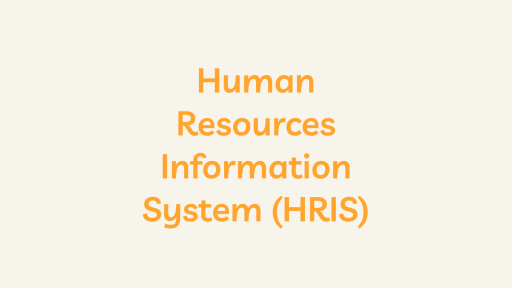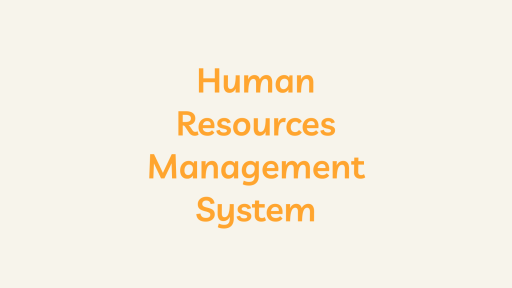Introduction
In the ever-evolving landscape of business and industry, organizations recognize that their most valuable asset lies not in tangible resources but in their workforce’s collective skills, knowledge, and capabilities. Human Capital Management (HCM) emerges as a strategic approach to harnessing this invaluable resource, shaping it into a dynamic force that propels organizational success. HCM encompasses a spectrum of practices, from recruitment and talent management to workforce planning, learning and development, and performance management.
In this comprehensive exploration, we delve into the intricacies of each facet of HCM, unraveling its significance in creating a resilient, innovative, and high-performing workforce. Join us as we navigate through the nuanced layers of Human Capital Management, understanding its components, benefits, and the pivotal role it plays in shaping the destiny of modern organizations.
1. Recruitment and Onboarding
Recruitment:
Recruitment within HCM begins with developing compelling job descriptions that accurately reflect the responsibilities and expectations of a given role. This involves outlining the required skills and qualifications and crafting a narrative highlighting the organization’s culture and values. Utilizing various recruitment channels, including job boards, social media, and professional networks, ensures a diverse pool of candidates.
Selection Process:
The selection process is a crucial aspect of recruitment. HCM emphasizes the use of structured interviews, competency assessments, and psychometric tests to evaluate candidates objectively. This systematic approach helps identify individuals whose skills and values align with the organization’s objectives.
Onboarding:
Once a candidate is selected, the onboarding process becomes pivotal. Onboarding in HCM is more than just paperwork; it’s about integrating new hires into the organization’s culture and providing them with the necessary tools and information to succeed. This includes orientation sessions, mentorship programs, and introductions to key team members.
2. Talent Management in Human Capital Management (HCM)
Identification of High-Potential Employees:
Talent management involves identifying individuals with high potential for growth within the organization. This process often includes assessing both current performance and future capabilities. Succession planning is a key component, ensuring that the organization has a pipeline of individuals ready to step into critical roles.
Career Development:
HCM emphasizes continuous learning and development. Organizations invest in employees’ career growth through training programs, workshops, and opportunities for further education. This not only enhances individual skills but also contributes to the overall adaptability and innovation of the workforce.
Retention Strategies:
Talent management also involves implementing strategies to retain high-potential employees. This can include competitive compensation packages, career advancement opportunities, and a positive work culture that values and recognizes employees’ contributions.
3. Workforce Planning in Human Capital Management (HCM)
Strategic Workforce Planning:
Workforce planning in HCM is a strategic process that involves aligning the organization’s current and future workforce needs with its overall business goals. This includes analyzing demographic trends, skill gaps, and potential disruptions to ensure the organization has the right talent at the right time.
Skill Gap Analysis:
To address future challenges, HCM conducts thorough skill gap analyses. This involves assessing the workforce’s current skills, identifying areas of expertise that may be lacking, and implementing targeted training programs or recruitment strategies to bridge those gaps.
4. Learning and Development
Continuous Learning Programs:
Learning and development initiatives in HCM are designed to be continuous and adaptable. This may involve e-learning platforms, workshops, mentorship programs, and other methods to ensure employees stay abreast of industry trends and acquire new skills as needed.
Performance Support:
In addition to formal learning programs, HCM recognizes the importance of performance support. This includes providing resources and tools that employees can access in real time to enhance their on-the-job performance.
5. Performance Management
Goal Setting:
Performance management within HCM starts with setting clear and measurable goals for individuals and teams. This ensures that everyone is aligned with the organization’s strategic objectives.
Regular Feedback:
Regular feedback is a cornerstone of HCM’s performance management. This involves ongoing communication between managers and employees, facilitating a continuous improvement mindset and promptly addressing any challenges or concerns.
Recognition and Rewards:
Recognizing and rewarding high performance is integral to HCM. This can be monetary incentives, promotions, or public acknowledgment, fostering a positive and motivating work environment.
6. Employee Engagement
Cultural Alignment:
Creating and maintaining a positive work culture is central to employee engagement in HCM. This involves ensuring that the organizational culture aligns with the values and aspirations of its employees.
Communication Strategies:
Effective communication strategies are employed to keep employees informed and engaged. These include regular updates on organizational goals, achievements, and changes and opportunities for employees to provide feedback.
Wellness Initiatives:
Recognizing the holistic well-being of employees, HCM often includes wellness initiatives. These may range from health and fitness programs to mental health support, contributing to overall employee satisfaction and engagement.
7. Data Analytics and Technology
HR Analytics:
HCM leverages data analytics to make informed decisions about human resources. HR analytics involves collecting and analyzing data on various HR metrics, such as employee performance, turnover rates, and workforce demographics. This data-driven approach enables organizations to identify trends, predict future needs, and make strategic decisions.
Technology Integration:
The integration of technology is a key enabler of HCM. HR software and management systems streamline various HR processes, from recruitment and onboarding to performance management and learning and development. This enhances efficiency and provides a centralized platform for data management and analysis.
Predictive Analytics:
In advanced HCM practices, predictive analytics forecasts future workforce trends and challenges. By analyzing historical data, organizations can anticipate talent needs, identify potential areas of improvement, and proactively implement strategies to stay ahead in a dynamic business environment.
Benefits of Human Capital Management
Strategic Decision-Making:
HCM, with its data-driven approach, empowers organizations to make strategic decisions based on a comprehensive understanding of their workforce. This includes aligning human resources strategies with overall business objectives, optimizing staffing levels, and addressing skill gaps.
Enhanced Employee Productivity:
A well-implemented HCM strategy contributes to increased employee productivity. By aligning individual goals with organizational objectives, providing continuous learning opportunities, and fostering a positive work environment, employees are motivated to perform at their best.
Adaptability and Innovation:
HCM encourages a culture of continuous learning and development, fostering adaptability and innovation within the workforce. Employees who are equipped with the latest skills and knowledge are better prepared to navigate industry changes and contribute to the organization’s innovative initiatives.
Talent Retention:
By focusing on talent management, employee engagement, and creating a positive work culture, HCM contributes to higher levels of talent retention. This saves costs associated with recruitment and training and ensures that the organization retains institutional knowledge and experience.
Employee Satisfaction and Well-Being:
Employee satisfaction is a key outcome of effective HCM practices. Strategies such as recognition programs, feedback mechanisms, and wellness initiatives contribute to a positive work environment, enhancing overall employee well-being.
Сonclusion
Human Capital Management is the orchestration of human potential, a symphony where each instrument, from recruitment to technology integration, plays a crucial role in creating a harmonious and high-performing workforce. It stands not just as a strategic imperative but as a commitment to unleashing the latent capabilities within every individual, ensuring that organizations adapt to change and lead with innovation. As organizations embrace the principles of HCM, they embark on a journey where human capital becomes the driving force behind enduring success, propelling them toward a future defined by excellence and resilience.





